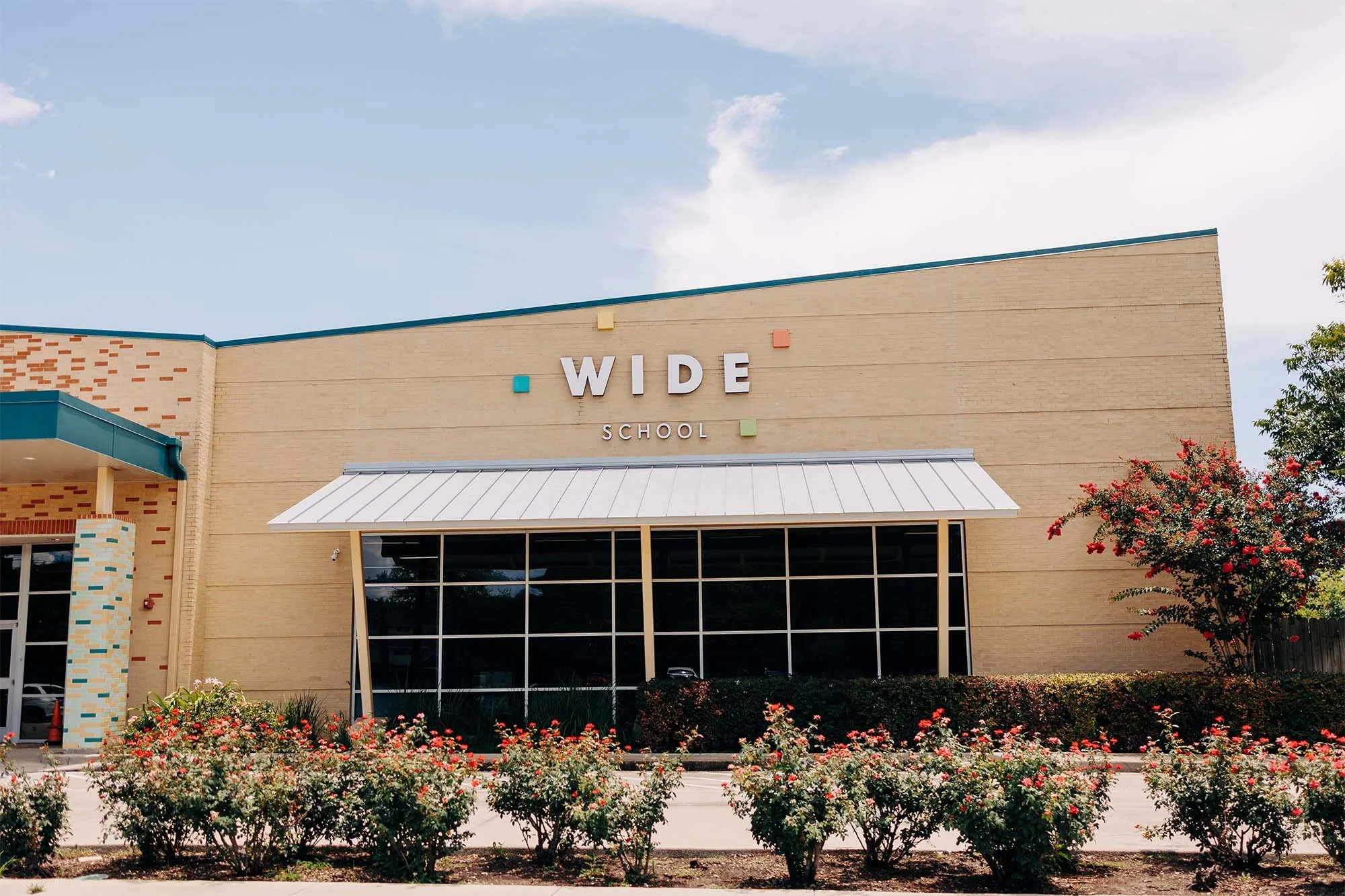
ADMISSIONS
Applying to WIDE
We are so excited that your family is considering WIDE for your child’s education. Our admissions process ensures your child’s learning needs are accommodated by our programs, so they can be curious, dynamic, and ready to become future leaders.
Step 1: Submit Your Parent Survey
Please complete the following submission forms below, based on your child’s program level.
Step 2: Start a Conversation
Celia is our Office Manager. She will send you a letter with general information about the school, details about our programs, and tuition.
Step 3: Meet & Greet
We want to hear from you! We will arrange time to answer any of your questions, and tell you what the WIDE experience can offer. You are welcome to schedule a campus visit too.
Frequently Asked Questions:
-
Yes, all of our Upper Grade teachers hold degrees in education or relevant to their subject areas, and our Think Tank instructors bring specialized degrees and real-world experience to their fields. For example, our art educators have degrees in fine arts and involve students in Houston and the surrounding areas’ creative scene through projects like murals and festivals. In our culinary program, instructors with backgrounds in chemistry, nutrition, and entrepreneurship guide students through hands-on experiences that connect food, science, and business. This combination of academic credentials and practical expertise allows us to offer rich, authentic learning opportunities across disciplines.
-
Our students are primarily engaged in collaborative group work, brainstorming ideas, dividing responsibilities, and developing and presenting their projects together. Project-based learning is largely a social curriculum, not just a series of independent assignments. It requires students to work closely with peers, make decisions together, and navigate differing perspectives. This kind of learning demands not just academic engagement, but also emotional intelligence, patience, and a growing ability to take the perspective of others.
We also emphasize student agency: the ability to stay engaged, make choices, and follow through on tasks without constant prompting. These skills are essential for successfully completing long-term, open-ended projects.
We deeply value diverse learning styles and strive to create an inclusive environment especially for visual, auditory, or hands-on learners. We do not have in-house specialists or individualized support beyond our general classroom approach. That said, some students who are identified as on the spectrum, may thrive here when they are ready for the level of collaboration, flexibility, and independence that our program requires.
-
Description text goes here
-
At WIDE, class size and structure depend on the subject matter and the needs of the students in a given year. We intentionally design learning experiences that respond to the students we have and the goals of each course. For example, you may see larger groupings of 20 or slightly more students in subjects like science, art, social studies, or English language arts. However, for subjects that benefit from more targeted instruction such as math or high school-level courses like Algebra I, Algebra II, or Geometry. We often create smaller groups to ensure depth of understanding.
In larger classes, if needed we incorporate differentiated instruction. This means that within one class, students may be working at different levels: some engaging in accelerated or honors-level work, while others receive reinforcement to build a strong foundation. This ensures that all students are supported and challenged appropriately.
Our students are frequently grouped across two to three grade levels in what we call flexible groupings. This allows us to focus more on academic readiness, motivation, and social-emotional maturity than on age or grade alone. These small, ability-based groups foster personalized learning, peer mentorship, collaboration, and soft skills development. Because of this structure, the traditional idea of "class size" becomes less important. What matters more is that students are placed in learning environments where they can thrive.
-
Yes, we do have teachers who specialize in specific subject areas, especially in upper elementary, middle, and high school. For example, students have dedicated teachers for subjects like math, pre-algebra, Algebra I & II, and Geometry, as well as for government, science, and English Language Arts. Our school day includes academic blocks where traditional subject-based instruction occurs.
However, because our program is grounded in project-based learning and influenced by the Reggio Emilia philosophy, we emphasize collaboration among teachers and across disciplines. Rather than assigning one teacher per subject or grade level in a rigid structure, we have a core group of educators who work fluidly across multiple grades and content areas. Academic subjects are not taught in isolation, but are integrated into interdisciplinary units that reflect real-world connections.
For example, a unit on Native American cultures might include history, geography, art, food, writing, and government. These can all be explored as one cohesive experience, co-taught by several teachers. A math teacher might lead students in collecting and analyzing data, while an ELA teacher supports them in presenting their findings through structured writing. Similarly, scientific concepts often emerge through literature, allowing students to explore topics like anatomy, biology, or chemistry through nonfiction texts and novels.
This interdisciplinary, collaborative approach allows us to personalize learning, foster deeper understanding, and prepare students to think critically across subjects just as they will be expected to do in the real world.

